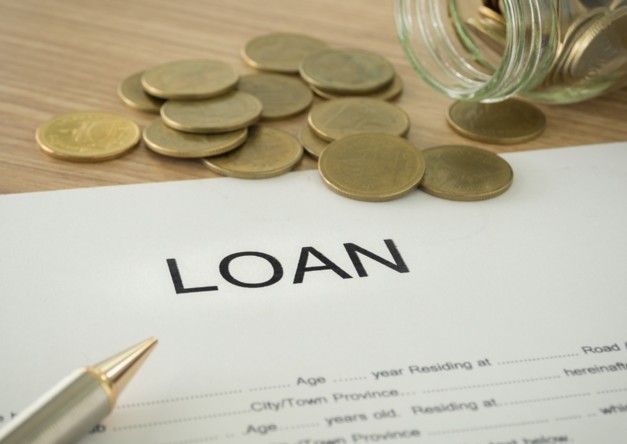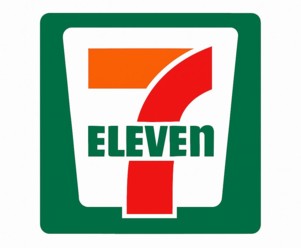How To Secure a Business Loan With Your Pay Stubs
By Jaden Miller , May 21 2025

Your pay stubs show precisely what you earn and what gets taken out each period. Lenders use the information on your stubs to determine if you can take on a loan. So, can you get a loan with check stubs?
In this article, you will learn why your pay stubs matter and how to get a loan with check stubs.
You’ll find out whether banks will accept digital versions, and what lenders actually look for on a stub before approval. Don’t have traditional pay statements? You’ll get to explore other acceptable proof of income documents for your loan applications.
- Why Do You Need Stubs for Loan Applications?
- Documents You Need To Get a Loan With Check Stubs
- Step-By-Step Guide To Get a Loan With Check Stubs
- How Many Pay Stubs Do You Need?
- Do Digital Pay Stubs Count for Business Loans?
- What Lenders Look for on Your Pay Stub
- Other Alternatives if You Don’t Have Pay Stubs
- To Sum It Up
Why Do You Need Stubs for Loan Applications?
Think of your pay stub as a mini report card for your income. It tells lenders two key things: how much you make before taxes and what actually lands in your bank account. If the number on your stub comfortably covers your proposed loan payments, that’s a plus on your application.
Another is the consistency. Handing over a stack of recent stubs—say, the last three or four—shows you’ve been on steady payroll for a while. That history makes you look less risky in the eyes of a loan officer. Finally, the deductions section includes the taxes, insurance, and retirement contributions. It helps them figure out your real debt-to-income ratio. The ratio confirms that you can handle an extra monthly payment.
Documents You Need To Get a Loan With Check Stubs
Besides your stubs, lenders will ask for a handful of other papers to paint the complete picture of your finances. Beyond your pay stubs, here’s what you’ll want in hand to smooth the application process:
-
Photo ID & Proof of Address: A driver’s license or passport plus a utility bill or lease agreement shows who you are and where you live.
-
Recent Pay Stubs: Download the latest from your employer’s system—these are your primary “proof income pay paid stub.”
-
W-2s or 1099s: If you’re an employee, pull last year’s W-2. If you’re a contractor, use your 1099 forms instead.
-
Tax Returns: Self-employed or running a small business? Lenders will want your 1040s (and Schedule C if applicable).
-
Bank Statements: These back up your pay stubs by showing the actual deposits hitting your account.
-
Business Financials: Profit-and-loss statements or balance sheets are needed. It will help paint the complete picture of your company’s health.
Your pay stubs should line up with your W-2s, tax returns, and banking records. It makes it easy for the lender to say yes. And that means you’ll be on your way to securing the financing you need—fast.
Step-By-Step Guide To Get a Loan With Check Stubs
-
Gather all your paperwork: Gather about 2–4 of your most recent pay stubs, W-2s or 1099s, tax returns, bank statements, and ID.
-
Download or create your stubs: If your employer offers a pay stub portal, download the high-quality version in a shareable format. If not, you can use a pay stub generator to get stubs that serve as proof income pay paid stub.
-
Double-check for accuracy: Check each stub and confirm all the details on your document. Minor errors in your proof income pay paid stub can slow down approval.
-
Submit clear pay stubs: When you apply—online or in person—attach clear copies of your stubs.
-
Be ready to follow up: Some lenders contact HR or run an income verification. Having neat, legitimate stubs—digital or printed—means they’ll breeze through this step.
How Many Pay Stubs Do You Need?
You might be asking, “How many pay stubs are typically required if I want to get a loan with check stubs?”. In most cases, lenders ask for the most recent two to four pay stubs. That usually covers about two or three months of work. If you’re paid bi-weekly, your last two to three stubs work fine. If you’re on a monthly schedule, the last one or two will usually do.
For smaller loans, like an auto loan or a short-term personal loan, two pay stubs often suffice. You need more if you’re applying for something larger, such as a mortgage or a long-term business loan. Expect to show stubs covering one to three months of consistent income. And if you happen to have more than four stubs handy, that’s even better—it shows steady employment over time. Just keep them in date order so a loan officer can easily flip through and see your pay history.
Do Digital Pay Stubs Count for Business Loans?
Most banks will accept digital pay stubs when you get a loan with check stubs. A verifiable PDF from your company payroll management system works just as well as a paper copy. The key is clarity—make sure your PDF shows the whole layout. These include your employer's name, pay period, gross and net pay, and deductions without any cropping or blurred lines.
Many lenders actually prefer electronic documents because they’re easier to verify. Some even integrate with payroll systems to pull income data directly. A clear digital version meets the same proof income pay paid stub standard as a printed sheet. If you only have paper stubs, scan them into a high-resolution PDF, and you’re all set.
What Lenders Look for on Your Pay Stub
When a lender checks your stub, they’re hunting for these essential details:
-
Your Employer Details: A lender will first confirm your current employment and pay. That proves you’re still on the payroll and have reliable employment to match your loan request.
-
Gross vs. Net Pay: Your gross and net pay give an overview of your financial status. What you earn and what gets taken out would determine if you can handle extra payments.
-
Total Deductions: All your deductions, like taxes and health insurance premiums, are important. It helps to calculate and determine your real debt-to-income ratio.
-
Year-to-Date Earnings: Pay stubs have extra details known as the YTD that give a summary of your annual earnings. If it’s mid-year and your YTD matches roughly half of your yearly salary, everything checks out.
Before you hand over your stubs, make sure all details are accurate, correct, and verified. Make sure no essential details needed for your pay stub loan application are missing. Having correct pay slips, whether paper or digital, enhances your application.
Other Alternatives if You Don’t Have Pay Stubs
Maybe you’re a freelancer or contractor or just started a new job and don’t have traditional stubs. You can still get a loan with check stubs by using other documents as proof income pay paid stub:
-
Ask for an employer letter: If your company hasn’t issued pay stubs yet, a signed letter on letterhead from HR or your manager works. It should state your hire date, role, and pay rate so lenders see you’ve got a steady and reliable income.
-
Use your tax returns: Your last one or two years of Form 1040 and Schedule C, if you’re self-employed, are rock-solid proof of income. Documents of your tax returns back up any gaps in pay stubs and show what you reported to the IRS.
-
Show bank statements: If your earnings hit your account via direct deposit, you would need the last three to six months of statements. Highlight regular deposits that match your expected pay. This earns you extra points as proof income pay paid stub.
-
Include 1099s or commission records: Independent contractors can submit their 1099-MISC/NEC forms or a summary of any bonuses/commissions.
-
Provide a Profit & Loss statement: A year-to-date profit and loss statement prepared by a certified accountant works for businesses. It shows your business revenue in detail and works like a proof income pay paid stub.
-
Use other income papers: If you receive Social Security, alimony, or rental income, statements or award letters for those payments count too. The goal is to give the lender a reliable source of income. So you can still get a loan with check stubs even when you don’t have traditional stubs on hand.
To Sum It Up
At the end of the day, your best bet is to get a loan with check stubs. If you don’t have formal check stubs handy, employer letters, tax returns, or bank statements can fill in the gaps.
If you ever need extra or replacement stubs, a reliable online pay stub maker can create lender-friendly documents in minutes. With everything in place, you will be able to get a loan with check stubs.Similar Articles
We’ve helped numerous individuals and businesses create professional documents! Create yours today!










